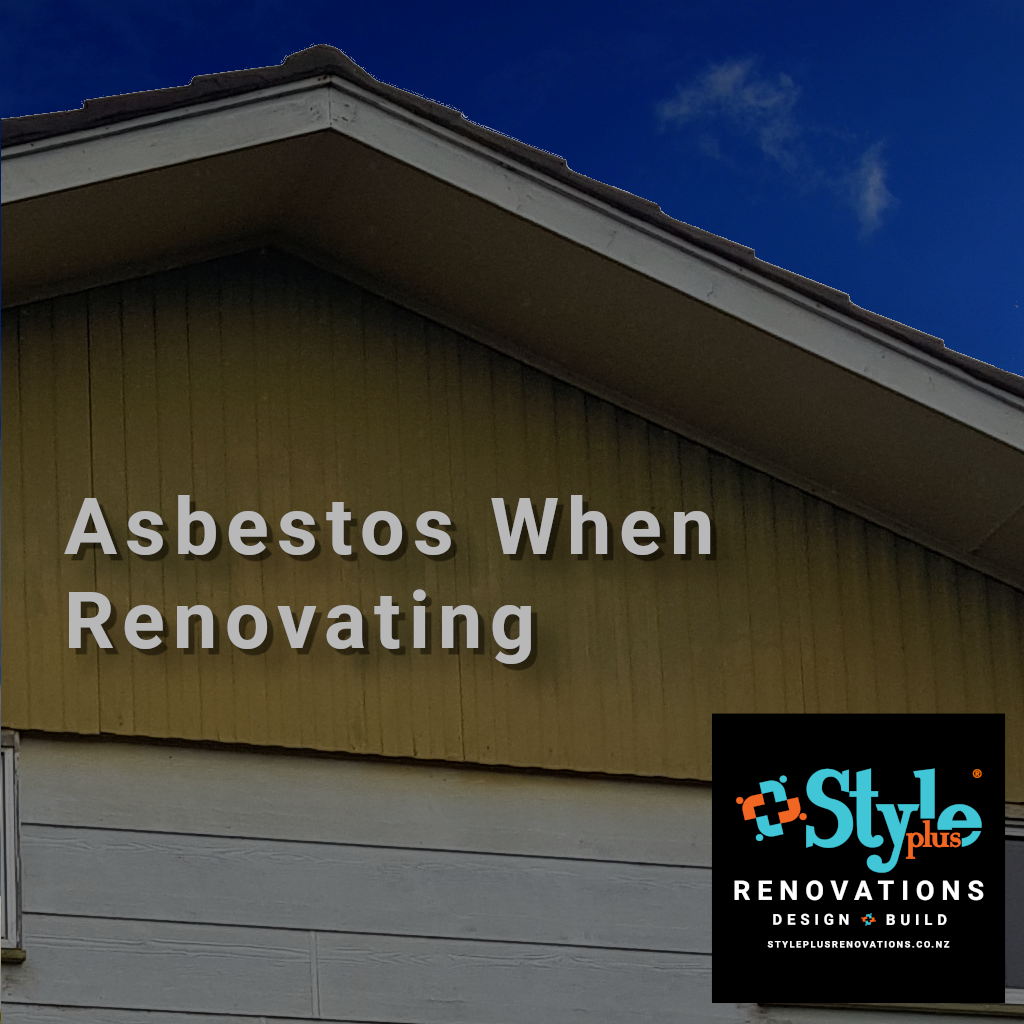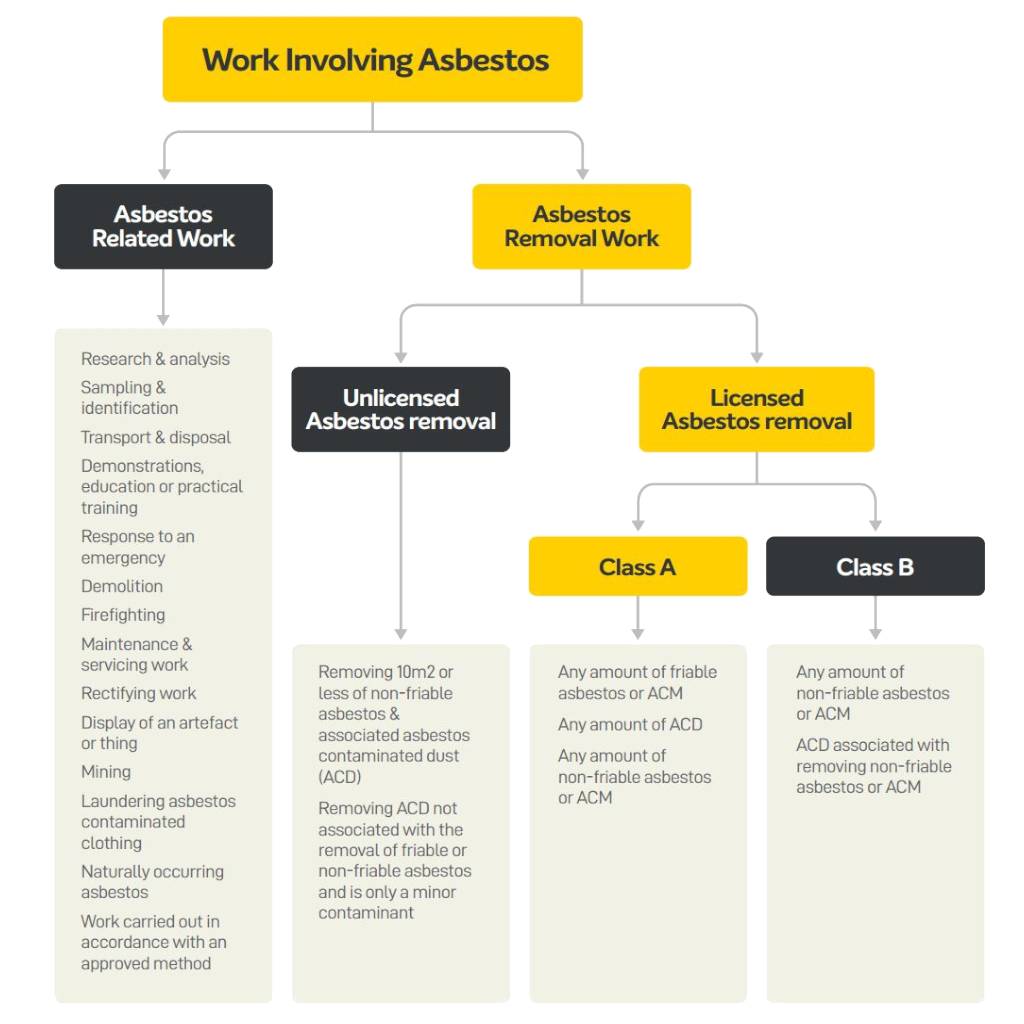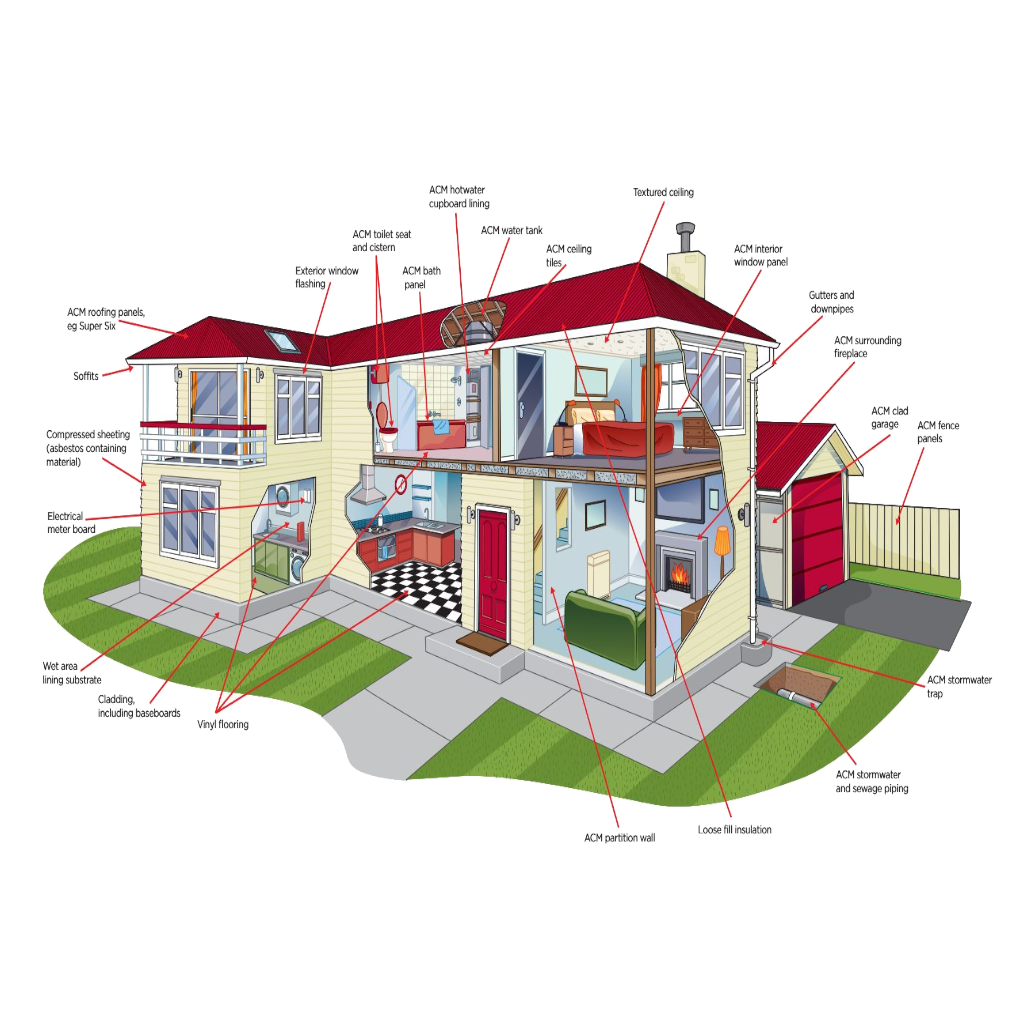HOME RENOVATIONS AND ASBESTOS
Have you considered asbestos when planning home renovations?
Asbestos is very likely to be present in houses built or renovated between 1950 and 2000.
The team at Style Plus Renovations reviews what to do if you suspect you have asbestos materials.

WHAT SHOULD I BE AWARE OF BEFORE I RENOVATE?
A home renovation is an exciting time because you can not only on your interior design, but you also have the ability to completely update your external appearance.
With all of these exciting decisions, however, come many more serious considerations and surprises, one of the most common of which is asbestos.
Many homeowners considering renovations may believe they do not need to consider safety measures because their properties are unlikely to contain asbestos. It is, however, more common than you might think.
If your home was built or renovated prior to 1987, it is very likely to contain asbestos-containing materials (ACM). It was still likely that some ACM had been used if it was built or renovated between 1987 and 1990, and it was unlikely but still possible that it contained asbestos if it was built or renovated after 1990.
When asbestos is disturbed, asbestos fibres are released into the air and breathed in, posing a health risk. If asbestos is not properly maintained or removed carefully, both friable and non-friable asbestos can pose a significant health risk.
Short-term and long-term exposure can put you at risk for lung cancer, asbestosis, mesothelioma, and pleural disease.
WHERE CAN I FIND ASBESTOS IN MY HOME?
Asbestos is a natural silicate mineral that is prized for its resistance to heat, electricity, and chemical corrosion. There are six known types of asbestos, the most common of which you are likely to find in your home is Chrysotile.
You may also be surprised at how many areas of your home may contain asbestos if they fall within 1950 and 2000 time frames.
WorkSafe has created a poster outlining the various parts of a typical residential property where it can be found, including fence panels, cladding, compressed sheeting (soffit linings), roofing panels, window flashing, ceiling tiles, hot water cupboard lining, and more.
SAFETY FIRST
If you plan to renovate your home, it is critical that you understand the health risks and regulations surrounding asbestos so that you can get started without jeopardising the health of you, your family, or your neighbours.
Worksafe is responsible for regulating asbestos in the workplace.
When a contractor performs renovation works or repairs on your home, the workplace includes your home.
Worksafe enforce the Health and Safety at Work (Asbestos) Regulations 2016 (the Regulations), which are intended to reduce the risk of asbestos exposure.
Worksafe recommends hiring someone to handle any asbestos removal work, particularly friable asbestos.
If you have asbestos removed, ask the contractor if the work requires an asbestos removal licence. If it does, you should ask to see their asbestos removal licence. Homeowners can look up a list of licenced asbestos removalists.
STARTING RENOVATION WORK?
Before beginning any renovation work, your contractor should request a demolition or refurbishment survey.
This is an intrusive survey that may necessitate entering certain areas of the building.
The survey should be restricted to the work area.
Depending on the size of the job, it may be safer if you are not living in the house at the time of the survey.
If asbestos is discovered, it must be removed before the refurbishment work can proceed. If the asbestos is only minor, your contractor may be able to remove it.
If the area of removal work exceeds 10 meter square, it must be performed by a licenced removal company. A licenced company has the knowledge and experience to keep your family safe.
Download: ACOP: Management and removal of asbestos (PDF 3.8 MB).

ONCE THE REMOVAL WORK IS DONE
After the removal work is completed, you should receive a clearance certificate confirming that the area is safe.
Your contractor must ensure that this is done by an impartial third party.
Do not re-occupy the area where asbestos was removed unless you have been given a certificate, as this is your peace of mind, proving that it is safe.
COST OF REMOVAL OF ASBESTOS (EXAMPLE)
The following are a few indicative costs associated with the survey of the house and the removal and disposal of asbestos. The indicative costs are based on a 160-meter square, 1978, two-level home that has asbestos cladding and soffits on the second level. 140 meter square of asbestos to be removed.
- An asbestos refurbishment* survey, the cost is approx. $1,500.
- Removal and disposal of asbestos, the cost is approx. $9,500.
Other costs to be considered are,
- Scaffolding costs
- Toilet facilities for the contractor.
SUMMARY
Buildings constructed or renovated before 2000 are likely to contain asbestos materials.
It is bad practice to assume there is no risk and that there is no asbestos.
Renovation businesses must identify and manage risks associated with asbestos, and management plans are required for workplaces such as residential renovation sites, where asbestos or asbestos-containing material has been identified or is likely to be present.
WorkSafe NZ has comprehensive information on its website to help businesses and people understand the risks of asbestos and how to manage them
ASBESTOS REMOVAL FAQS
- Do I need an Asbestos Management Plan?Yes. The Health and Safety at Work (Asbestos) Regulations 2016 require an up-to-date Asbestos Management Plan for a workplace where asbestos or asbestos-containing material (ACM) is identified, or is likely to be present.
- What is the first step if I think I have asbestos present on my home?The first step is to determine whether asbestos is actually present in the building where the work will be done. The presence of asbestos and asbestos-containing material (ACM) in a workplace must be identified in a number of situations under the Health and Safety at Work (Asbestos) Regulations 2016. A survey conducted by an asbestos surveyor is one method of identifying asbestos and ACM.
- Does my home become a workplace when I renovate and have the asbestos removed?Yes. If you hire someone to do additional work, your home becomes a 'workplace' for the duration of that work. You will be a 'other person at work' under HSWA (Health and Safety at Work Act).
- What are the NZ Health & Safety Regulations for AsbestosHealth and Safety at Work (Asbestos) Regulations 2016 - here
- Can chrysotile cause Mesothelioma?Yes. There is no doubt that chrysotile can cause mesothelioma (cancer of the lung or abdominal cavity linings).
- Should I inform my neighbours abut the asbestos removal?You should also inform your neighbours about the work you intend to do. It is especially important to explain the safety precautions you will take to reduce the possibility of asbestos fibres entering the air.
- What should I check with the contractor before work commences?Before beginning work, your contractor should request a demolition or refurbishment survey. If the property was built before January 1, 2000, or if asbestos has previously been identified, this is required.
If you’re still undecided about what to do if you suspect that your home has asbestos materials such as cladding, soffits, make sure to consult with a professional asbestos removal company so you can make an informed decision that will benefit you in the long run.
Alternatively, contact us to discuss your renovation plans and arrange for a free consultation. At Style Plus Renovations, we ensure asbestos is identified and removed before any work that may disturb the asbestos begins in your home.
Whilst all information is considered to be true and correct at the date of publication, changes in circumstances after the time of publication may impact the accuracy of the information.
The information may change without notice and Style Plus Renovations is not in any way liable for the accuracy of any information printed and stored or in any way interpreted and used by a user.
Get started with a Free
Architects Renovation Feasibility Report
LET'S START
YOUR RENOVATION PROJECT
Tel us about your renovation project and we’ll call you back for a no-obligation chat about your ideas.
Alternatively, if you prefer, we can initially set up a meeting using Microsoft Teams or Zoom (and other meeting apps) for a no-obligation chat about your ideas.
We look forward to hearing from you to discuss your project and get you started on your renovation journey.
If you would like to know more about our renovation process, check it out here.


